Gallery Network
7 Questions for Painter Brett Bigbee About Capturing the Complexities of Life—Demons and All
Bigbee's recent work, now on view at Alexandre Gallery, takes on elements of imagination and allegory.
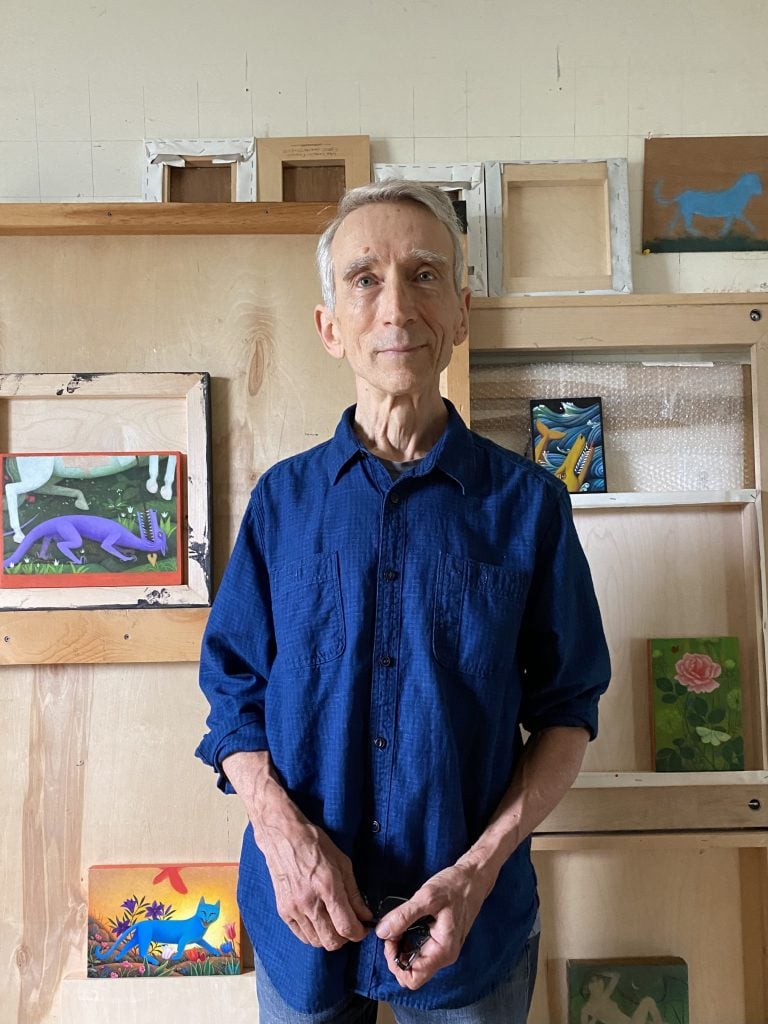
Bigbee's recent work, now on view at Alexandre Gallery, takes on elements of imagination and allegory.

Artnet Gallery Network

American artist Brett Bigbee (b. 1954) has maintained his painting practice for almost 40 years. His early work was recognized for its near photorealistic portrayal of intimate, symbol-laden vignettes and portraits. Graduating from the Pennsylvania Academy of Fine Arts in 1985, he was subsequently the recipient of a Fulbright grant, which allowed him to study Renaissance and Old Master painting in Italy—the influence of which can be clearly seen in his work.
The Maine-based painter, originally from Jacksonville, North Carolina, is currently the subject of a solo show in New York with Alexandre Gallery, “Small Realities,” which is on view through December 21, 2023. Featuring 15 works dated between 2018 and 2023, the selection highlights a distinct evolution in the artist’s work, moving away from traditional figuration towards the realm of allegory and myth.
We reached out to Bigbee to learn about the thematic underpinnings of the show, as well as what goes into his distinctive artistic process.
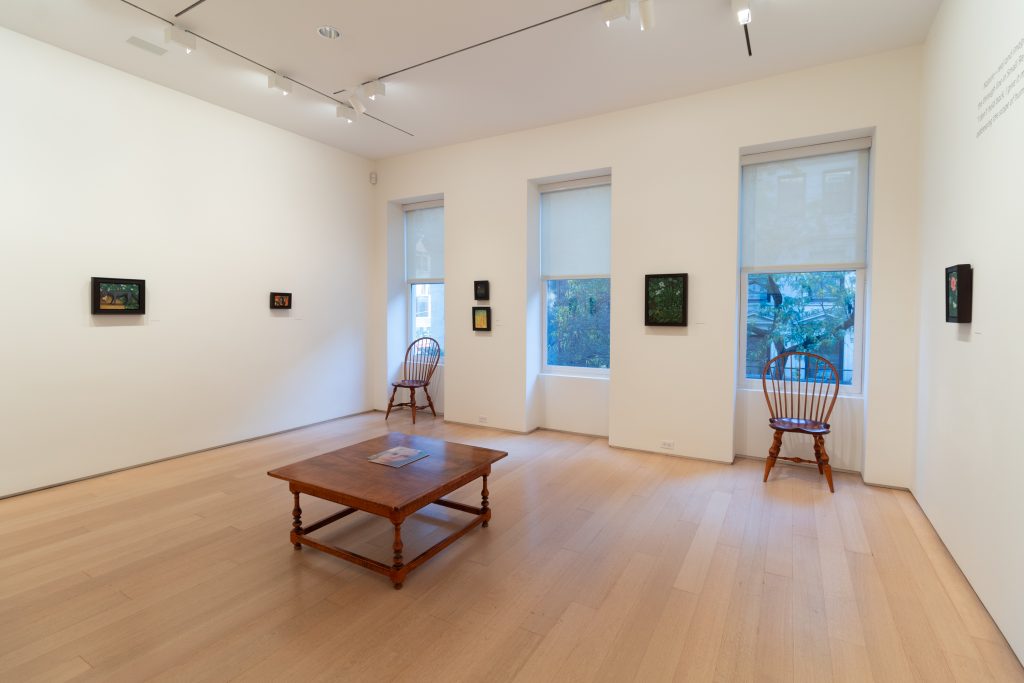
Installation view of “Brett Bigbee: Small Realities” (2023). Courtesy of Alexandre Gallery, New York.
Can you talk a bit about your exhibition with Alexandre Gallery, and the themes of the show?
In my latest exhibition, “Small Realities,” I attempt to capture the intriguing way that human experience comprises both the extraordinary and the mundane, often simultaneously. In my earlier work, I sought to construct an idealized world of gravity and grace, beauty and stillness. While I continue to emphasize beauty in my new works, many of my recent paintings include discord and dissonance. This shift reflects both my profound awe at the marvels of human existence in this extraordinary world and an acknowledgment of the internal demons that distort our appreciation of life. I want my work to be provocative—to encourage viewers to delve into the diverse realities that shape their own experiences.
The works in “Small Realities” shows a departure from your previous work. What initially inspired this evolution in your practice?
As I have gotten older, the internal struggles and pain that I carefully kept from my paintings have morphed into a source of inspiration. My early work is highly controlled, with carefully crafted compositions and meticulous brushstrokes. My later work is looser, attempting to capture the complexity of the lived experience. The evolution of my work reflects not just my chronological progression, but also my willingness to engage with the entirety of what it means to be human.
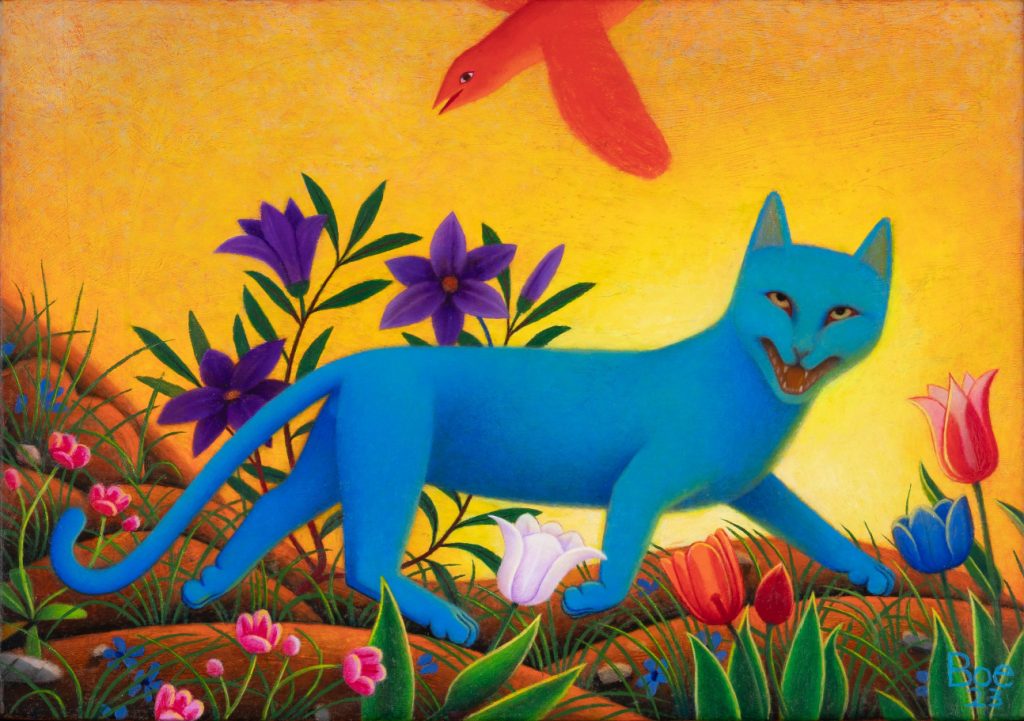
Brett Bigbee, In the Land of Prizm (2023). Courtesy of the artist and Alexandre Gallery, New York.
What do you hope visitors of this exhibition take away with them?
I hope that at least a few of them will have been touched by the colors, the compositions, and the life force found in these paintings. I also hope these works connect them to the rich language of art we’ve all inherited.
How would you describe your process either technically or creatively? Is it more intuitive and spur-of-the-moment, or do you plan everything out ahead of time?
I start with a general idea of what I want to say and allow the details to unfold organically as I immerse myself in my work. My use of pure color—a departure from my previous work—is remarkably liberating. The vibrant blue of the cat in In The Land of Prizm (2023) is a statement of joy and pain and a clear indication that we are not purely in the world we experience with our physical senses. Using pure colors also frees my lines to make impactful statements. For example, in the painting Heritage (2018), the serpent’s dramatic white lines reinforce the idea that the creature is separated from Eve’s reality and defines its otherworldly nature.
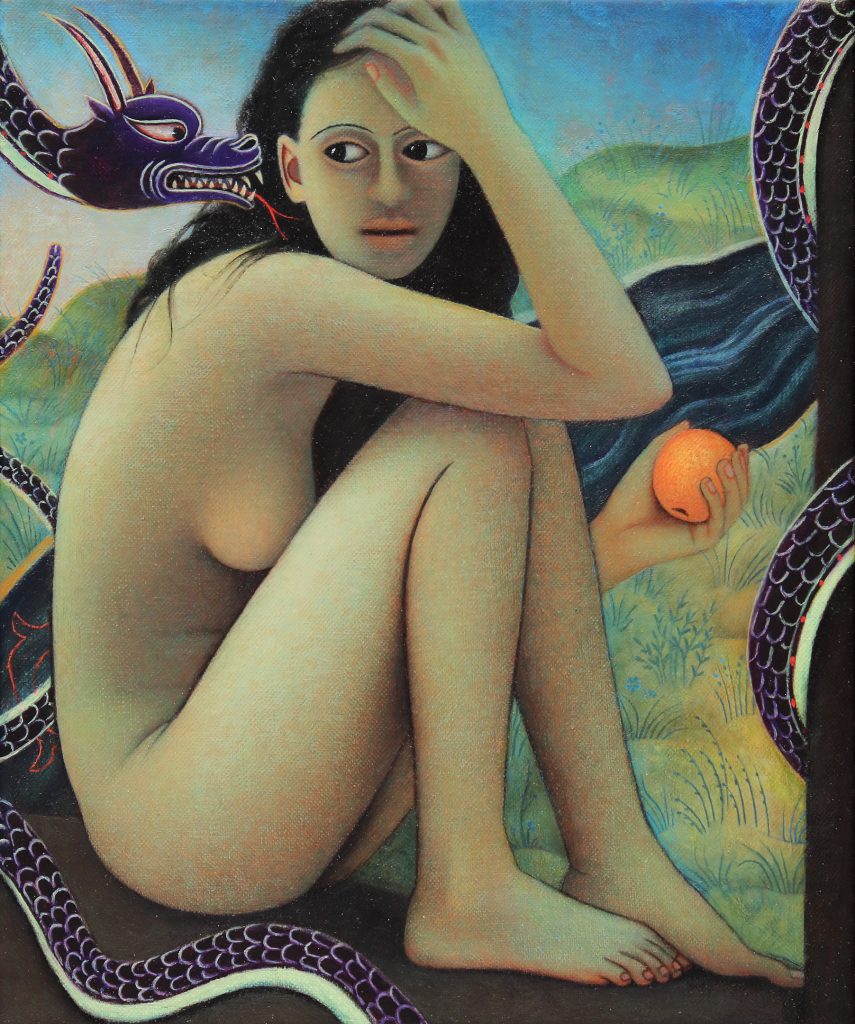
Brett Bigbee, Heritage (First Version) (2018). Courtesy of the artist and Alexandre Gallery, New York.
Where do you most commonly find inspiration? Are there any artists or movements—historical or contemporary—that have particularly influenced you?
My mother, a self-taught artist, supported us by painting portraits, so I grew up understanding that paints or pencils combined with a flat surface could express magnitudes. In my early life, we lived in a small log cabin, with woods and swamps that were my refuge when times were rough. My love of nature is evident in my paintings. I was fortunate to study at the Pennsylvania Academy of the Fine Arts, where I was drawn to the works of Giotto and Piero della Francesca. The solidity of their forms in confined spaces were a major influence as I was developing my voice. You can easily see their influence in my earlier paintings, and it is also present in my current work. These days, I am surprised by the imagery that resonates with me as I seek to understand myself and my path in the world and to express these on my canvases.
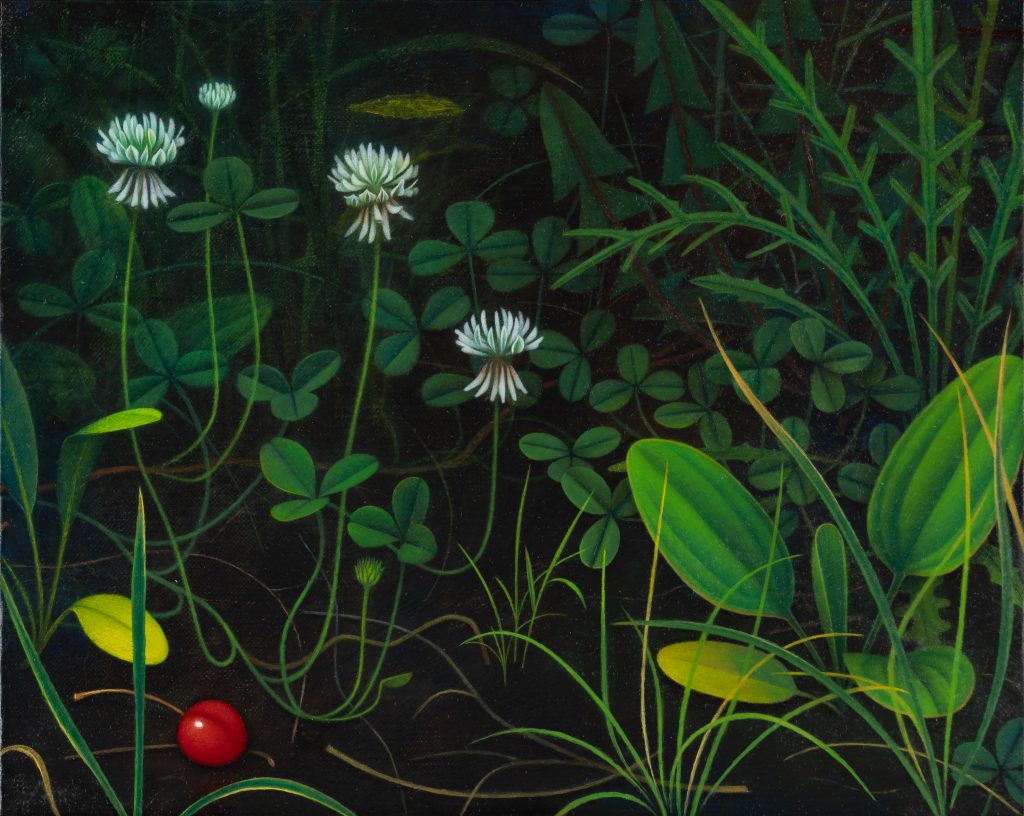
Brett Bigbee, Sanctuary (2023). Courtesy of the artist and Alexandre Gallery, New York.
What do you believe the artist’s role in society is today?
Looking within, which I often do, I know there is much to say, share, and make clear. My role is to examine and then speak about the confusing and beautiful world that fills me with awe.
Can you tell us about what you are currently working on, or hope to work on next?
I am still very interested in capturing life. How do I show being alive? What would it look like? I hope each future painting will help answer these questions more beautifully and more meaningfully.

Brett Bigbee, I’m Not a Cat (2022). Courtesy of the artist and Alexandre Gallery, New York.
“Brett Bigbee: Small Realities” is on view at Alexandre Gallery, New York, through December 21, 2023.